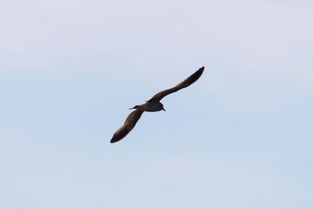Content:

Sea fishing, with its vast open waters and abundant marine life, offers a thrilling and rewarding experience for anglers of all skill levels. However, for those new to the sport, the prospect of casting a line into the deep blue can be daunting. Fear not, for we have compiled a comprehensive guide to help you master the art of sea fishing, even if you're just starting out. Here are some essential tips to help you catch more fish with your ordinary sea fishing equipment.
Choose the Right Equipment Before you set out on your sea fishing adventure, it's crucial to have the right gear. For a beginner, a standard sea fishing rod and reel combination should suffice. Ensure that your rod is appropriate for the type of fish you're targeting and that your reel is capable of handling the weight of the line and the fish you expect to catch.
Understand the Basics of Bait and Lures The choice of bait or lure can significantly impact your success on the water. For beginners, natural baits like worms, crabs, or small fish can be effective. However, lures such as spoons, jigs, and spinners can also be productive, especially in areas with less abundant bait fish. Experiment with different types of bait and lures to see what works best in your chosen fishing spot.
Learn to Cast Properly A good cast is essential for successful sea fishing. Begin by practicing your casting technique on land. Aim for a smooth, controlled motion, and try to avoid overcasting or undercasting. Once you're comfortable with your technique, head to the water and practice casting from a boat or the shore. Remember to keep your rod tip low and your wrist relaxed to achieve the best results.
Identify Prime Fishing Spots Research the area you plan to fish and identify prime spots for your target species. This might include rocky outcrops, piers, jetties, or areas with a lot of marine life. Use online maps, local knowledge, and even smartphone apps to help you pinpoint the best spots.
Adjust Your Tackle for the Conditions Sea conditions can vary greatly, and your tackle should be adjusted accordingly. In rough seas, use heavier tackle to ensure your line doesn't snap under pressure. In calm conditions, lighter tackle can be more effective. Additionally, consider the water temperature and depth, as these factors can influence the behavior of fish.
Be Patient and Observant Sea fishing requires patience. Fish may not bite immediately, so be prepared to wait. Pay attention to the water and any signs of fish activity. Look for surface disturbances, bubbles, or schools of fish. If you notice these signs, it's a good indication that there might be fish nearby.
Learn to Read Your Bait or Lure Understanding how your bait or lure behaves in the water is crucial. For natural baits, observe how they move and adjust your presentation accordingly. With lures, practice different retrieves and see which one attracts the most fish. The key is to mimic the natural movement of the fish you're targeting.
Practice Knot Tying A strong and reliable knot is the backbone of your fishing setup. Practice tying various knots, such as the Palomar knot, Clinch knot, or Uni knot, until you can tie them quickly and efficiently. This skill will save you time and prevent losing fish due to a poor knot.
Be Aware of Safety Measures Always prioritize safety when sea fishing. Wear a life jacket, especially if you're on a boat. Check the weather forecast before you set out and be aware of any local fishing regulations or restrictions.
Enjoy the Experience Remember that sea fishing is not just about catching fish; it's about the experience. Enjoy the beauty of the ocean, the fresh air, and the peace that comes with being out on the water. With time and practice, you'll improve your skills and start reeling in more fish.
By following these tips, you'll be well on your way to becoming a proficient sea fisherman, even if you're just starting out with ordinary sea fishing equipment. Happy fishing!












